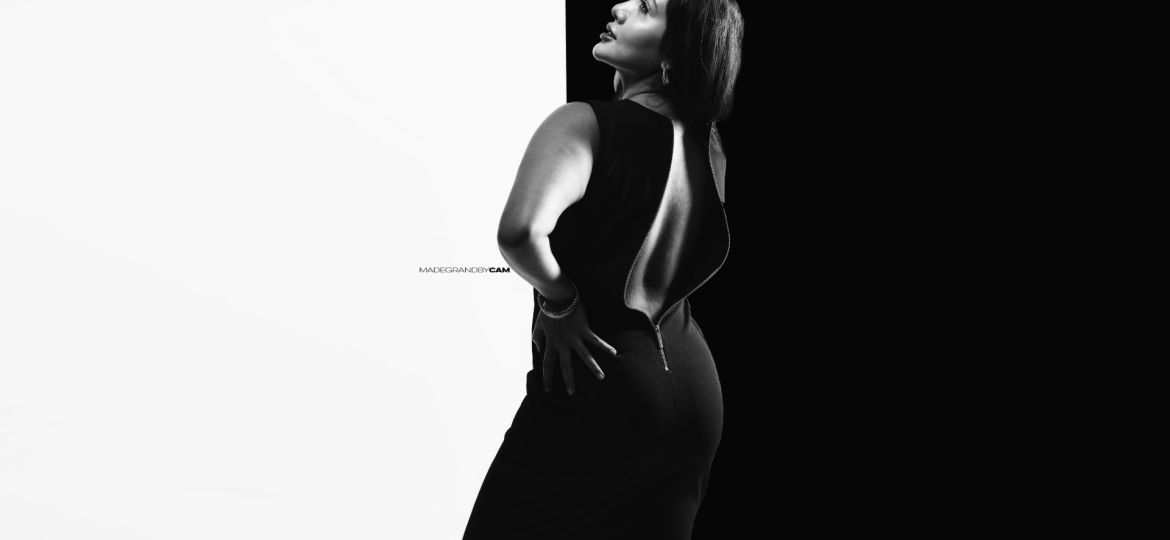
Moving From Taking Pictures to Making Portraits with Studio Strobes
In my journey from making ordinary to extraordinary images, I knew that I needed to gain mastery over light and shadows in my portraiture. The mastery of light (or the lack thereof) is what separates one photographer from another.
Creating with studio strobes on-location or in studio has transform my portraiture from taking pictures to making portraits.
Usually, when I talk to friends and family about “taking pictures” versus “making portraits”—they believe it’s just a play on words.
So, what’s the difference between making a portrait and taking a picture? Aren’t they the same thing? Not really.
Every Portrait Has Two Main Ingredients—Time and Light
Understanding light—it’s intensity, its shape, its hue, its absence, its direction, its reflection, its speed, and its movement is essential to studio photography. These are just some of the characteristics that I look for when I’m composing an image. Each element will have an impact on the look and emotion that I’m creating.
There is so much that photographers are able to do using natural sunlight as a primary source of light for a portrait. Still, one of the big challenges with natural light is balancing the exposure across the scene. Let’s consider outdoor portrait photography. You’ve probably have seen a lot of outdoor images where the background is overexposed (completely white on a blue-sky day) to compensate for the foreground. I’m not a fan of those images. Cameras can only expose for one subject at a time. That’s either the background or the foreground. When exposing for the background to subject becomes a silhouette because it’s underexposed. When exposing for the foreground, the background is blown out because it’s overexposed. So, what do you do when there is no sun on an overcast day?
Getting Good Light with Studio Strobes
Professional photographers must be able to create the perfect light regardless of the time of the day or location—indoors or outside. The sun is only available during the day. This requires moving beyond natural light to producing and shaping artificial light.
Because of my background in video production, my first foray into artificial light was with continuous tungsten and halogen lights. I loathe producing videos with those hot lights. I never color balanced the tungsten lamps in production, so post-production always took an extra step to do so. The halogens were bright and clean…but difficult to shape. I hated both of them because the lamps quickly got hot, the ambient heat cause the whole room temperature to quickly rise, and they were dangerous to touch and turn off.
So, I moved to LED lamps for continuous light. I love LED lamps simply because they are small and don’t create the heat that traditional lamps produce. Years ago, my LED lights had one drawback, they rarely were ever bright enough to produce the desired effect. Today, I use LED lights from Rotolight and Zylight that both produce beautiful color balanced light with enough brightness to make the image I want. My Zylight also gives me the ability to create color hues without the need for gels. The final benefit of LED lights is that they provide a safer lighting option for clients that may have an adverse reaction to strobe lighting in their eyes.
Moving From Speedlights to Studio Strobes for Sculpting Light
Beyond continuous lighting, photographers move to strobes or flashes to create a desired visual effect. Years ago, I bought a Nikon Speedlight for my flash photography, but eventually gave it away without opening the box. At the same time, I started shooting with Sony Alpha mirrorless cameras. I later bought another Nikon Speedlight 910 for my Sony cameras…and got some interesting results. However, flash photography with speedlights simply didn’t produce the quality of light that I want for my art or portfolio.
The biggest investment I’ve made beyond my camera bodies and lenses is my pro lighting gear—specifically, monolights. Monolights are strobes. Strobes are flashes. However, they are not speedlights! In the simplest terms, monolights provide far more power than speedlights and create greater illumination for your subject. Typically, it would take three to five speedlights to achieve the same performance I get from just one of my monolights. The greatest advantage monolights have over all other lighting approaches is the number of modifiers available to sculpt and color your light and shadows. This is game-changing creativity for the photographer and her subject. Personally, I prefer shooting with light I create so that I can produce consistent results in any condition.
I don’t subscribe to the notion that only professional photographers use monolights. I believe a professional photographers and photography enthusiasts can make a great image in all lighting conditions that they can shape or modify. That said, I would submit that professional photographers are masters of light and shadow. This mastery requires fluency across the natural light spectrum and artificial lighting gear.
I frequently experiment with light and shadows. It helps to continuously raise my performance from one level of mastery to the next. There is so much to achieve and much more to learn about light and shadows. I encourage you to subscribe to this blog to keep current on hot topics and emerging techniques in studio lighting and portrait photography!
Improve your Photography
Do YOU WANT to improve your photography and studio strobe skills?
Are you ready to raise the bar on your content creation skills? Join our creative community of makers and content creators. We provide workshops and tutorials for photographers, filmmakers, and content authors at all levels. Start reaching new audiences and new levels of engagement. Subscribe Webinars & Events newsletter for tips, industry news, and promotions for upcoming workshops.
Want to Learn More About Off-Camera Flash!?
Check out CONTINUUM



